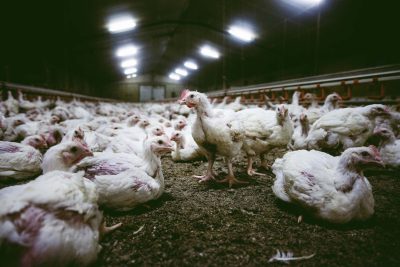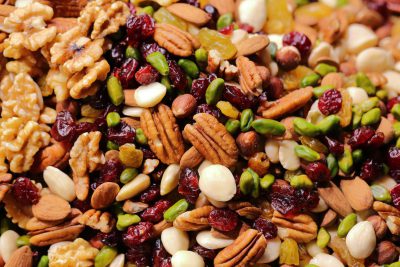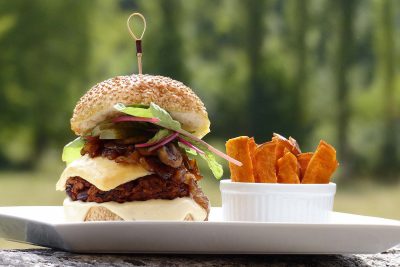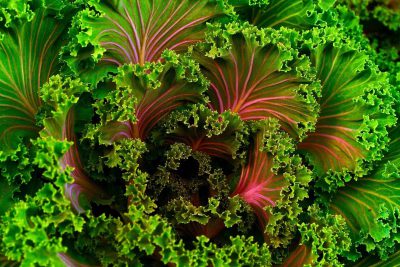Of all farmed animals, there are none more prevalent on the planet than chickens. There are 22.8 billion in total, which equates to three chickens for every human on earth.
Unfortunately, chickens have suffered greatly for the popularity of their flesh. To meet rapidly growing demands for protein, chicken farming went through a transition in the 20th century, from a small-scale, independent farm approach, to one dominated by intensive factory farming.
How Does A Chicken Farm Work?
Chickens are either farmed as ‘broilers’ (for meat) or laying hens (for eggs). Both are most commonly reared in intensive farms in the US and much of the rest of the world. Smaller scale, chicken farming does still exist, although these farms are rapidly disappearing.
Intensive
There is no way to sugar coat it, intensive farms are not places designed for the welfare of animals. They are designed to maximize the financial value of the animal. This unfortunately results in practices such as cruel transportation, debeaking, battery caging and more, that are designed to maximize efficiency, but almost always result in poor welfare and suffering for animals.
In our opinion, no animal should be exploited for food or by-products. And, since the vegan diet is perfectly healthy for all stages of life, delicious and affordable, the existence of chicken farms is unnecessary.
Alternative
There are of course many smaller, alternative poultry operations that still exist and they may make efforts to improve animal welfare and sustainability. It can be easy to think that buying meat from these producers is more ethical, but they are still raising sentient animals for premature death by slaughter, which is an inherently cruel thing to do. Most poultry species will live between six and ten years, and any farm, no matter how small, will send them to slaughter in the first two years of their life. Many of these smaller, alternative operations are also contracted by large suppliers, who handle the slaughter of their birds, so they still go through the same cruel transportation and slaughter methods common in intensive farming.
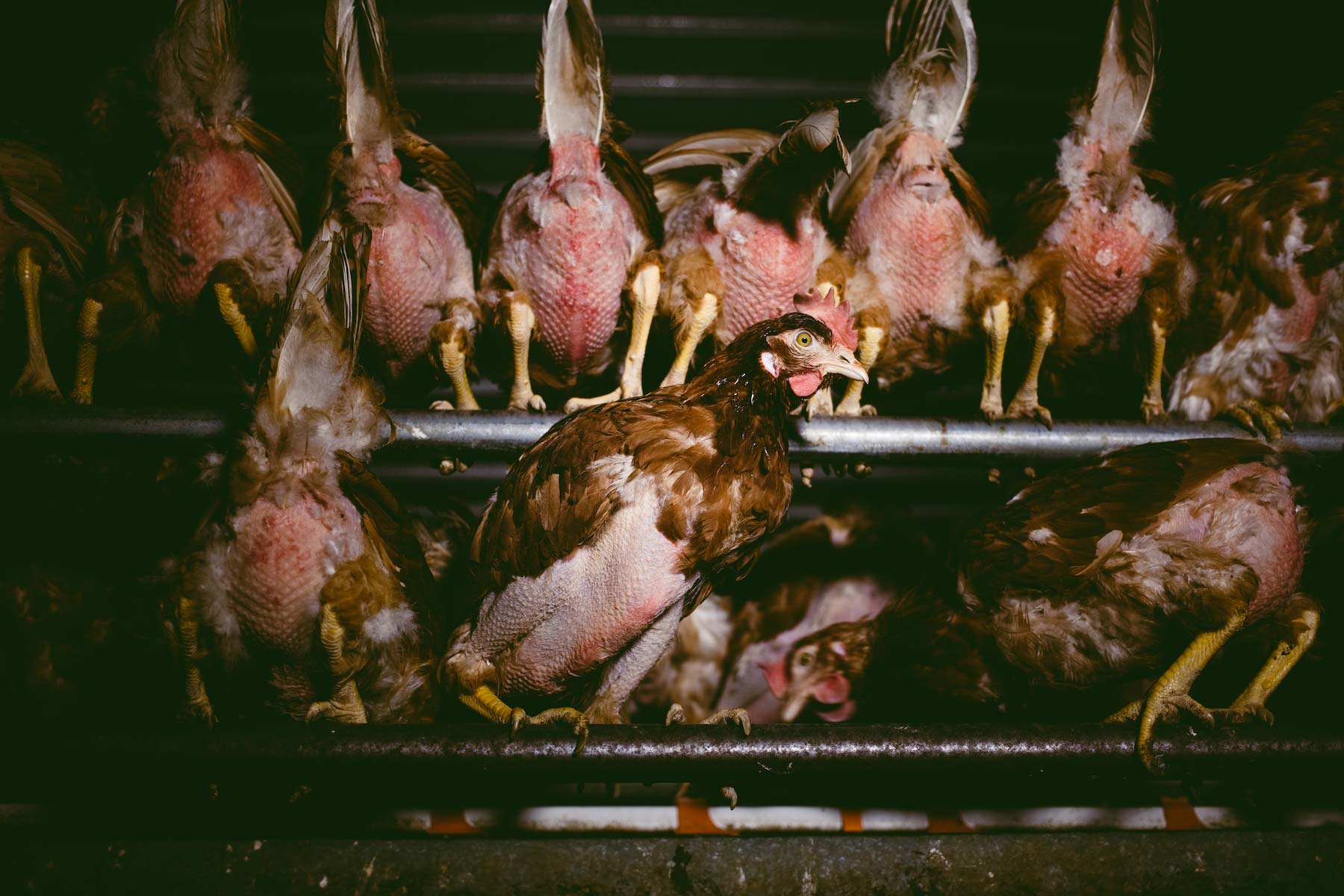
What Are Chickens Farmed For?
Egg-laying Chickens
Egg farms are typically intensive, and use cages to incarcerate the animals. Cage-free, free-range and organic egg farming has grown in recent years, but there is often confusion about what labels actually mean for the hens. But none of it is good.
All egg farms obviously rely on females, so any male chickens born in an egg farm are killed just moments after hatching. This is common practice across the whole egg industry, as no money can be made from the male birds. And whilst hens will lay eggs throughout most of their lives, production slows after around two years, meaning they are less profitable. Once this happens, the birds are killed and disposed of, usually in landfill.
Meat Production
Otherwise known as ‘broilers’, these chickens are slaughtered for meat at around six weeks old. Chickens can live for six or more years under natural conditions, so this acceleration of growth and premature death is truly astonishing – and detrimental to the birds’ health.
Since 1950, intensive farming has used genetic selection to cut the growth time of a broiler chicken in half. As their flesh grows at this rapid rate, the rest of their body struggles to catch up and often they collapse under their own weight, resulting in slow, premature death from heart failure or starvation.
Chicken Farm Facts And Statistics
- Humans slaughter, process and consume around 2,100 chickens per second.
- In just 30 years, between 1990 and 2019, global poultry populations rose from 10.6 billion to 26 billion birds.
- Iowa has the highest number of chickens of any U.S. state with 72.58 million birds. Indiana and Ohio are next, with around 44 million and 43 million birds respectively.
- The US is the world’s largest poultry meat producer, with 18 percent of global output, followed by China, Brazil and the Russian Federation.
- Despite the risks to both individual and global health, and the suffering caused to animals, the consumption of poultry meat continues to rise.
- More than 11 million laying hens spend their lives in crowded cages or barns. Their natural behaviours, such as dust bathing, perching and wing flapping, are severely restricted.
Who Is The Biggest Chicken Producer?
The largest US producer of chicken products is Tyson Foods, who produce a staggering 200 million pounds of ready-to-cook meat every week. Interestingly, Tyson Foods has been a major investor in plant-based products, as well as pursuing their own line of vegan products. Perhaps they see an end for intensive factory farming on the horizon? We hope they get there sooner rather than later and we can all support that journey by going vegan.
How Many Chickens Can Fit In A 10×10 Run?
This is up for debate. We would recommend zero. But if you are rescuing chickens and plan to keep them at home, the Community Chickens website states they need a minimum of 2-3 square feet per chicken inside the coop, and 8-10 square feet for outdoor enclosures.
We would suggest increasing that size as much as you possibly can. The more space they have to roam and exhibit natural behaviors the better.
What Age Do Chicken Stop Laying Eggs?
Hens can lay eggs pretty much throughout their lives but their productivity starts slowing down after about two years. This is when farmers send the birds to slaughter and replace them with younger birds, as they are no longer profitable.
How Many Acres Do You Need For A Chicken Farm?
This is totally dependent on how many chickens you plan to keep. Again, we would suggest using your acres for producing plant-based products or just for enjoying nature. But if you are rescuing chickens and plan to keep them on your land, allow them as much space as possible. The birds will be vulnerable to predators, so finding the balance between freedom and safety is essential.
Do Chicken Love Their Owners?
Scientists have shown that chickens are capable of having strong personalities, as well experiencing emotions such as fear, empathy and affection.
Chickens are very expressive, empathetic animals and show affection and love in all kinds of ways, so we can observe how they feel for ourselves. Obsessively following those who care for them is common and they are even partial to cuddles with humans.

So, yes, chickens may love those who care for them well, but do they love the farmers who cage them, cut off their beaks, exploit their bodies for financial gain and then send them to slaughter? We doubt it.
How Profitable Is A Chicken Farm?
Unfortunately, large-scale, intensive chicken farms can be very profitable, but only due to a wide range of cruel measures that have sped up growth and commodified chickens. Debeaking, the use of battery cages, chemically enhanced feed, and cruel transportation are all commonplace.
Do Chickens Mourn Their Dead?
Absolutely. But don’t take our word for it. Here’s what chicken expert and author of ‘How to Speak Chicken,’ Melissa Caughey, has to say:
‘As a hen nears the end of her natural life, she often goes off and finds a quiet place away from the rest of the flock. During this time, the other members of the flock visit, one by one or a couple at a time. They hang their heads low to get on eye level with the dying chicken. Their coos are quiet, soft mutterings. For days after a hen dies, it is not uncommon for those who were closest to her to mourn the loss of their friend’.
What Do Egg Farms Do With Old Hens?
The short and unpleasant answer is that, once their egg production slows down to an unprofitable level, the birds are killed and disposed of, either in incinerators or in landfill. According to Jesse Laflamme, CEO of Pete and Gerry’s organic eggs, this is the most common practice in intensive farms across the US. But this is also common throughout the entire industry, not just in intensive farms.
The best thing we can do to stop this happening is to adopt a vegan diet. Alternatively, if you are thinking of giving a home to some hens, always adopt ex-battery birds! This way you are giving those animals a second chance at a natural and enjoyable life.
There are plenty of hen adoption agencies in the US, and one quick search is likely to show many in your area!

Is Chicken Farming Cruel?
Cruelty is defined as behavior which causes physical or mental harm to another. When applying this definition, intensive chicken farming is most definitely cruel. Scientists have shown that chickens are capable of a wide range of emotions when they are allowed to live naturally. Intensive farming practices remove this ability to express emotion and by definition, this is cruelty. Here are just some of the common practices in intensive and small scale farms:
- Battery cages – chickens thrive on exhibiting natural behaviours like digging and scratching for food, perching off the ground at night and creating dust baths. Battery cages remove the chickens’ ability and right to express all of these.
- Debeaking – removing the beak of chickens with a hot knife is not only painful for them, but often stops them from eating properly, resulting in starvation.
- Overcrowding – birds naturally prefer small flock sizes, and being crammed together with tens of thousands of others is extremely stressful, and can result in the birds harming one another
Of course, there are many methods of raising chickens that are defined as less cruel but this still depends on our personal ethics. As vegans, we believe that raising any animal for slaughter is a cruel act, as we are taking away that animal’s right to live.
Antibiotics
Intensive farms are unsanitary environments, which increase the risk of pathogens spreading. Instead of improving conditions for the birds, the industry’s answer has been to administer antibiotics, but this is both cruel to the chickens – as it forces them to remain in those appalling conditions – as well as being dangerous for humans.
In the US, 80 percent of antibiotics are now fed to livestock. Scientists have continuously warned that this increases antibiotic resistance and the risk of resistant ‘superbugs’ passing to humans. Increasingly, antibiotics are losing efficacy and we are wasting their life-saving potential by feeding them wholesale to farmed animals.
Generation Vegan has a useful overview of superbugs and how you can protect yourself here.
Arsenic
Isn’t arsenic a poison? We hear you. Arsenic has been a common additive of chicken feed in intensive farms for a long time, and although it is banned in Europe, it is still a fairly common practice in the US. Research shows that poultry consumption has been linked with increased inorganic arsenic levels in humans, which increases our risk of many cancers and neurological disease.
It is also devastating for the environment. Chicken manure spread on fields can cause inorganic arsenic to leach into groundwater, potentially affecting fish populations and even human drinking water supplies.
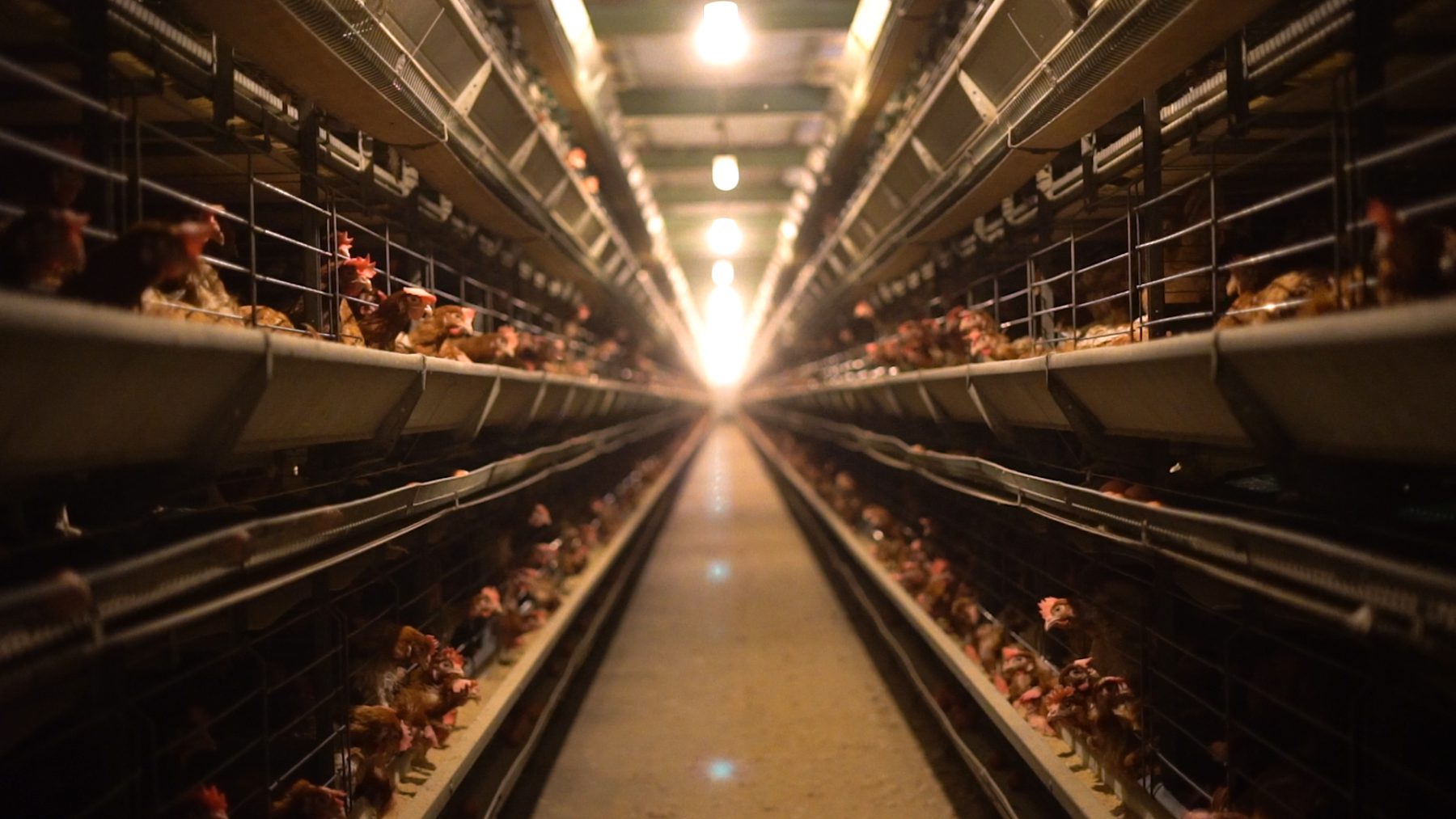
Battery Cages
Perhaps the most cruel feature of the intensive egg industry is the battery cage. In the US, the average hen has 67 square inches of caged space to occupy, which is smaller than a letter-sized piece of paper. For animals who need space to exhibit natural behaviors, and shelter in which to roost and lay eggs, this lack of space creates terrible suffering.
Other awful outcomes of battery cages include sore and blistered feet, from standing all day and night on cage wire. Chickens also rely on a natural pecking order in their societies. When this is removed and they are forced into such close proximity, the natural response is to turn on each other. They will peck out each other’s feathers, exposing their skin to the brutality of their caged surroundings. Cannibalism is also sadly common among these stressed and frustrated birds who are driven to this unnatural behavior by the cruelty of a cage.
De-beaked
The confinement of so many birds in a small space naturally leads to stressed animals who take their frustrations out on one another. The farming industry’s answer to this has been to cut off the beaks of chickens, which so often leads to nerve damage, lifelong pain and even starvation. Debeaking is also not a guarantee that chickens will not be able to cause harm to each other.
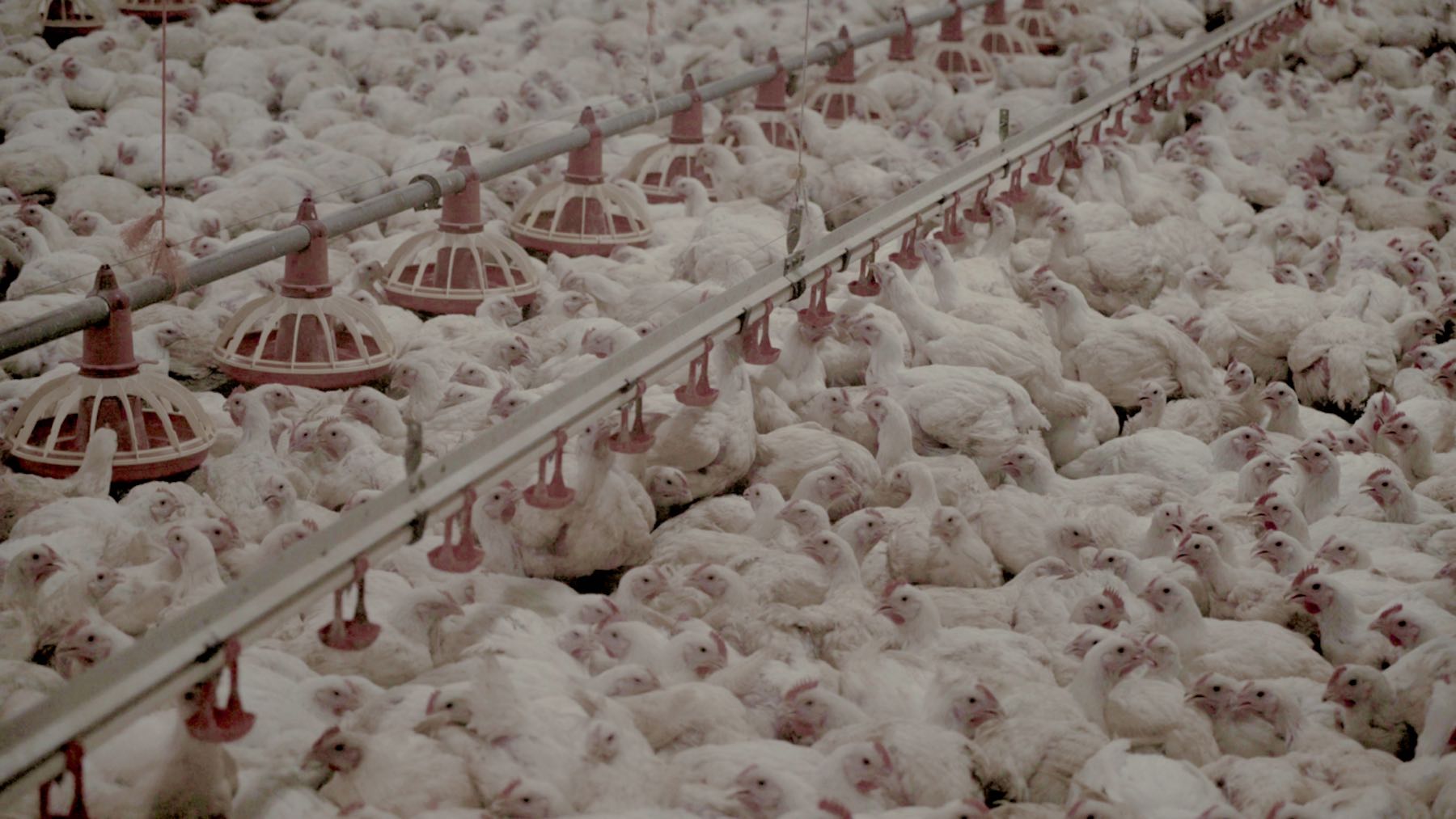
Indoor Broilers
Broiler chickens are usually kept in flocks of 40,000 or more in huge barns. They are more free to move than hens in battery farms, but research shows that the average space allowed for indoor broilers in the US is unacceptable when it comes to their welfare.
Here are some of the outcomes for chickens in indoor broiler systems:
- Lameness – studies show that over 50 percent of chickens in indoor broiler systems, due to their unnatural rapid growth, have brittle and broken bones and therefore issues walking or even standing up. So many birds will die as a result of this.
- Heart Failure – rapid growth of their flesh, means more demand for oxygen and pressure on vital organs.
- Polluted environment – vast amounts of pollutants from their waste build-up, causing health concerns for the birds, workers, and neighbors. High temperatures and poor ventilation can also increase the chance of premature death for birds.
- Mental trauma – thousands of birds will die inside broiler systems. As we know, chickens are capable of complex emotions, including fear and mourning, so the mental trauma of struggling to survive while hundreds around you perish is unimaginable.
Cruel Transportation
Broiler chickens, from both large intensive farms and smaller operations, are almost always transported to the slaughterhouse in crates, on the back of trucks. Journeys can be up to 12 hours, without food and water. Research shows that a journey of only 15km in dry warm conditions, doubles the mortality rate of chickens.
What Are The Health Impacts?
The poultry industry has created some very serious risks for human health. Some of these risks are due to the consumption of the meat, and so affect only those who eat it. Others are related to the farming itself and as such can affect everyone.
Avian Influenza
Commonly known as bird flu – strains of this influenza are common in waterbirds and farmed poultry. The most serious of these, and the ones you have likely heard of, are the H5 and H7 viruses. Due to the crowded and unsanitary conditions common to poultry farms, these diseases spread extremely rapidly and can kill a whole flock within 48 hours. Because death is so common in poultry farms, the presence of a virus often goes undetected, making them even more deadly.
The world was shown the deadly potential of avian influenza in 1918, when more than 50 million people around the world died in an outbreak. In 1997, the H5N1 strain killed people for the first time and had the potential to be globally devastating. Infections have since slowed but the threat of this deadly strain continues to exist.
Whilst we continue to practice poultry farming, the risk remains ever present. Pandemic experts say that it is a question of when, not if, there will be another avian flu pandemic.
E. Coli
E. coli bacteria normally live in the intestines of people and animals and most are harmless. But some types can cause serious illness, and can be transferred to people when eating their flesh. E. coli bacteria is common in poultry flocks worldwide, particularly in more intensive operations. For the birds, it can cause skin infections, as well as respiratory disease, which can lead to septicaemia and death.
It is more common to hear about E. coli 0157, which is predominantly spread from cows, goats or sheep and sometimes unpasteurized milk and infected beef products. But strains spreading to people from poultry is also common. A 2018 study by George Washington University found E.coli in fresh poultry products that was associated with bladder infections and other serious conditions. Although serious infections can only occur in a few strains of E. coli, the type identified in this study—E. coli ST131—is known to travel between the bladder and the blood. This claims thousands of lives each year in the United States.
Growth Hormones
Whilst widely used in cattle production, growth hormones are not currently used in poultry in the US. Not because producers are ethically against it, but because it isn’t necessary for maximizing output.
Instead, intensive farms have used genetic selection and breeding to achieve the rapid rate of chicken growth. This does not make it any more ethical, as selective breeding has led to chickens whose bodies grow unnaturally fast, resulting in them collapsing under their own weight and dying from heart failure.
Salmonella
Poultry meat is identified as the leading cause of salmonella infection and, unsurprisingly, it has become much more common as poultry farming has grown and intensified. The crowded and unsanitary farm conditions cause terrified birds defecate and peck at one another, creating an environment where bacteria spreads easily. Salmonella can thrive in these environments and for birds, infection causes depression, weakness, diarrhea and dehydration.
The preliminary findings of a five-year study being carried out at George Washington University, show that 14 percent of poultry on US shelves contain traces of salmonella. Salmonella causes severe food poisoning in 1.35 million people every year, as well as 26,500 hospitalizations and 420 deaths.
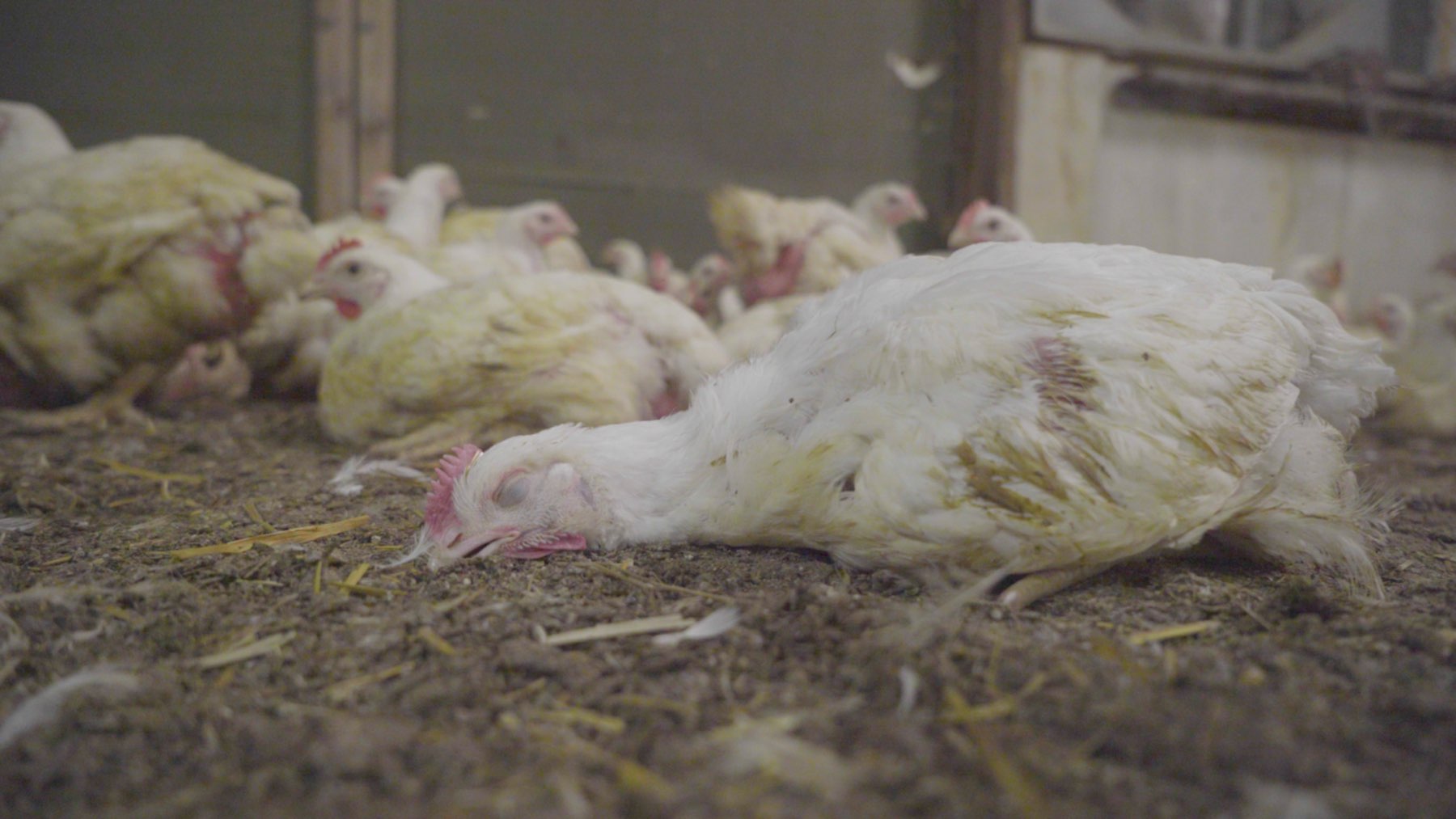
Environmental Impacts
The environmental impacts of chicken farming are caused most by intensive farms, particularly in the ‘broiler belt’ region of the US (the 15 states that produce nearly nine billion birds every year). The following are the most common:
- Chicken manure, containing inorganic arsenic, phosphorus and nitrogen, is often over-sprayed as fertilizer, often simply to get rid of this waste. This creates severe risks to groundwater. Large numbers of fish deaths are common, as the chemical runoff triggers massive algae growth, known as algal blooms, in waterways. The dominant algae blocks light from the waterways and starves fish of essential oxygen.
- Throughout the ‘broiler belt’ region of the US, natural habitats have been destroyed by the increasing number of large-scale factory farms being built. Natural pathways and habitats for wildlife have diminished as a result.
- Although farming chickens produces less greenhouse gases than farming cows, it is far from clean. Feed production produces carbon dioxide, and chicken manure, often over spread as a fertilizer, produces the extremely potent nitrous oxide. Poultry production is far more environmentally damaging than most fruits, vegetables, grains, legumes and nuts. So why not just go vegan?
Worker Health And Safety
Intensification and the drive to maximize profits has led to a variety of occupational hazards for those who work in chicken factory farms. Most common are: exposure to harmful gases and particles, repetitive stress injuries from physical labor, mental exhaustion and psychological trauma. Other health impacts include chronic aches and pains, respiratory disorders, cardiovascular problems and premature death.
These unacceptable conditions have led to some factory farms employing undocumented workers, who are less likely to complain about low wages and poor working conditions.
What Can You Do To Help?
The single most impactful thing you can do as an individual is go vegan. By removing animal products from your shopping basket, you are actively reducing demand which in turn reduces production. As more consumers do this, the demand for cheap chicken will go down and these wonderful birds will be spared the cruelty of a factory farm life. Try one of our 7- or 31-day vegan challenges here.
If you have the land and are able to provide a safe area, as well as lifelong veterinary care, you could consider adopting some ex-battery hens. We may not be able to save them all but you could give a few animals a second chance at a natural and fulfilling life, and to them that is everything. And creating a bond with such an engaging and affectionate animal is incredibly rewarding. There are adoption agencies all over the US.
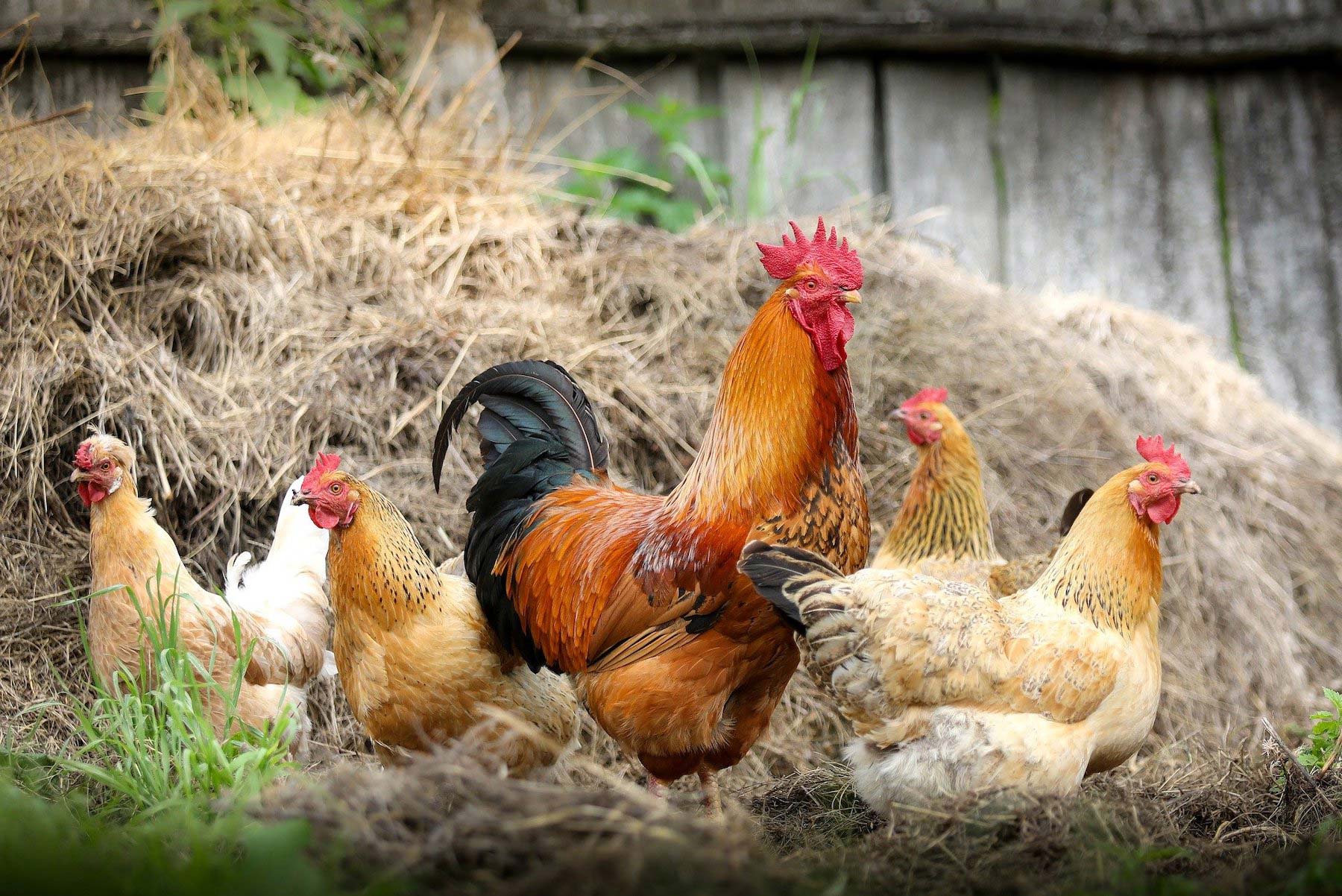
Conclusion
The chicken industry in the US is unfortunately dominated by intensive factory farms and the result is high levels of cruelty, as well as health risks to humans and environmental risks to our planet.
Chickens have been proven to feel complex emotions, including empathy, fear and affection. Yet we continue to farm them intensively and use practices that are proven to increase suffering. High use of antibiotics, battery cages and practices like debeaking, all result in a miserable existence for these complex animals. High demand for chickens’ flesh has created these harmful practices, so it stands to reason that we must reduce demand to end them. And the single best thing we can do to achieve this is to stop consuming them and their eggs.
By choosing plant-based foods, we can end their suffering, reduce the pandemic risk we are creating and lower the impact on our planet. If you like the texture and taste of meat, there are so many incredible plant-based chicken, turkey and other poultry products that replicate this.
So make the switch today and start contributing to a kinder and healthier world for birds and humans alike.
